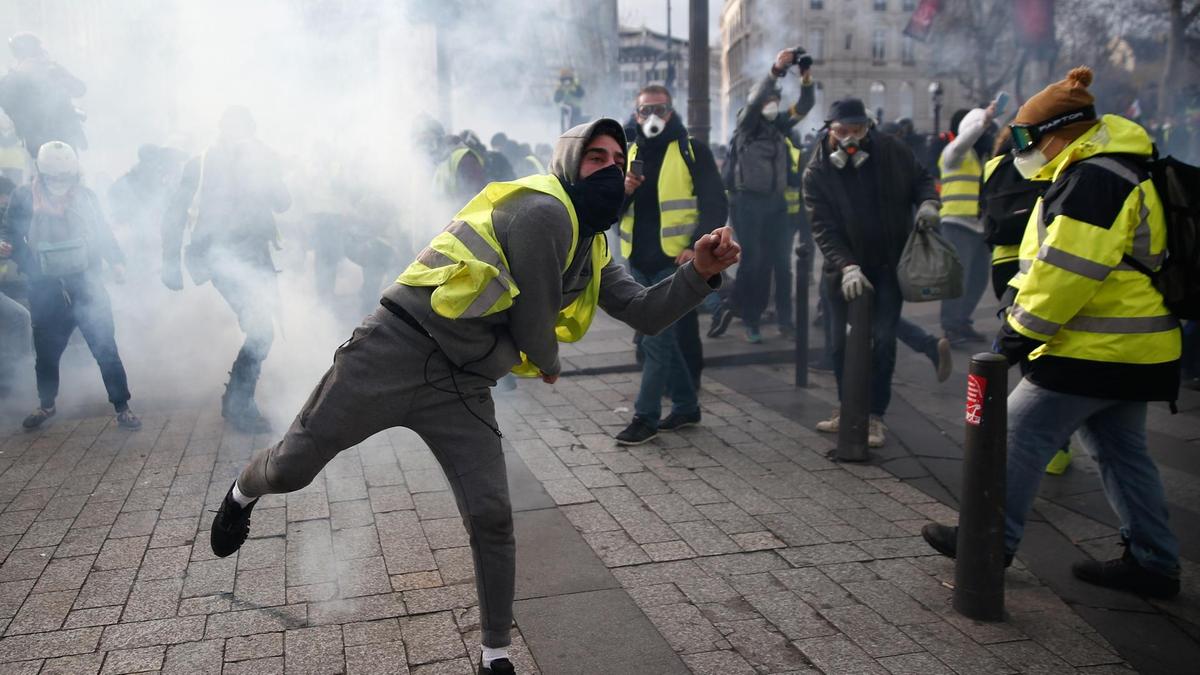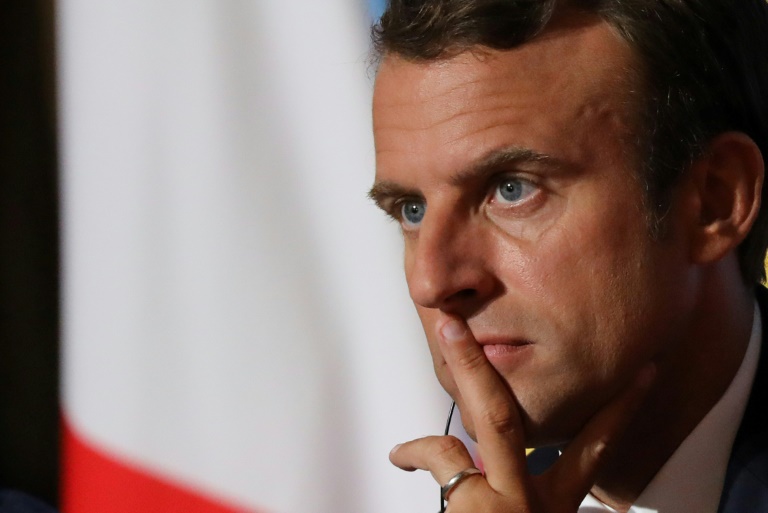The Yellow Vest protests began as a movement against French President Emmanuel Macron’s proposed fuel tax, but have turned into an uprising of discontent that often degenerated into chaos. Past demonstrations laid waste to high-end boutiques on the Champs-Elysées, saw businesses looted, and banks demolished. Pictures of burning cars and smashed store windows have caused a slump in hotel bookings in Paris.
Police forces have employed tough crowd control measures to contain violence, but the authorities are running into a trap: disproportionate use of force will only lead to more violence.

The measures taken include instant tear gas grenades and rubber bullets known as flash-balls (or LBD, Lanceurs de Balles de Defense). Between November and December 2018 alone, these 40mm projectiles have injured 108 people, of which 21 have lost an eye. One man recently awoke from a six-day coma after being hit in the head.
Human rights groups have denounced the violence. “Police are allowed to use force,” said Kartik Raj, Western Europe Researcher for Human Rights Watch. “But what we’ve documented is cases where they resorted to the use of tear gas grenades and LBD shots in instances where there was no imminent threat.”
Police Brutality in Plain Sight
This hasn’t helped to calm the situation. A new graffiti in Paris’ 13th Arrondissement shows Jerome Rodrigues, a Yellow Vest protester who rose to sad prominence after losing his right eye at a protest rally on January 26. The mural depicts the 39-year old’s black-and-white image, wearing his signature trilby hat and an eye-patch. Police brutality is now in plain sight, for all to see.
Événement Black Line 2
Paris 13ème
Rue Kellermann
Fresque sur 100m pour les GJ
On lache rien #lafamillehttps://t.co/Qr79rwUDBo pic.twitter.com/Wwu1GxtWsK
— Jerome Rodrigues Officiel (@J_Rodrigues_Off) February 25, 2019
Under growing scrutiny, French authorities have maintained that police forces use riot guns only when facing a direct threat and when left with no other means to defend themselves.
According to government official Laurent Nunez, only the limbs and the torso can be targeted. This sounds like a clear guideline on the use of such weapons, but it isn’t clear enough. Rubber projectiles to the head and the eyes have seriously injured observers, journalists, and even children.
“The question always has to be: is their use of force justified, is it proportionate and necessary to the aim they have?” said Human Rights Watch’s Raj. “And that’s the question the police needs to answer.”
And they better find an answer quickly. While the protests weekly decrease in size, previous demonstrations still mobilized roughly 40,000 people across France. The violence has alienated many at the protests. With moderate participants parting ways with the movement, more radical forces of the hard right and left are growing proportionately stronger.
The Yellow Vest protests show no sign of stopping, and the long-standing concern about the police’s approach to keeping order needs to be addressed.
Proportionality of Force
The debate about the proportionality of the use of force by French police, in particular the flash ball launchers, has been ongoing for almost two decades. In one case unrelated to the Yellow Vest protests, a person was killed.
The police has been urged repeatedly to review training, update guidance, and check munitions, but people are still getting injured at an alarming rate, according to Raj.
https://www.youtube.com/watch?v=V8xnIlT8NaI
Already in 2013, the national human rights institution Le Défenseur Des Droits called on the government to “prohibit or very strictly limit the use of flash-balls in the context of demonstrations.” The message went unheard.
Last month, the Council of Europe recommended a ban on flash ball launchers in police operations aimed at maintaining public order. Thirty-five ophthalmologists signed a letter to President Macron calling for an end to their use. French authorities rejected the recommendation, arguing that only internal or criminal investigations could determine disproportionate use of these weapons.
Heavy-handed police tactics, including tear gas grenades and flash-balls, were also used to crack down on high school students who had blocked their school in unrelated protests against educational reforms. The use of anti-riot measures against teenagers underlines the disproportionality of these tactics. It also lowers the threshold for their use among a generation of young police officers that will serve governments for the decades to come.
Training and stricter guidelines have either not been developed at all or haven’t been implemented, otherwise, people wouldn’t lose their eyes or be shot into comas.
French police urgently need to halt the use of disproportionate crowd control measures to prevent more violence and further damage the relationship between French citizens and security forces. And they should do so before next Saturday when protesters will face riot police who will likely once again be armed to the teeth.
Disclaimer: The views and opinions expressed here are those of the author and do not necessarily reflect the editorial position of The Globe Post.
























